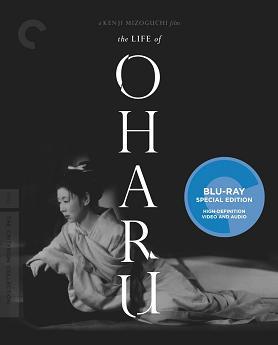Japanese director Kenji Mizoguchi had made eighty films that were largely unknown quantities in the West when his The Life of Oharu premiered at the Venice Film Festival and tied for the Golden Lion. A biographical tale of thirty years in the life of a 17th century Japanese woman who knows no end of grief and suffering, director Mizoguchi celebrates her fierce determination to continue life’s struggle rather than giving up and ending it all and makes her life’s journey one of near-celebration rather than one of dejection.

Studio: Criterion
Distributed By: N/A
Video Resolution and Encode: 1080P/AVC
Aspect Ratio: 1.33:1
Audio: Japanese 1.0 PCM (Mono)
Subtitles: English
Rating: Not Rated
Run Time: 2 Hr. 16 Min.
Package Includes: Blu-ray
keep caseDisc Type: BD50 (dual layer)
Region: A
Release Date: 07/09/2013
MSRP: $39.95
The Production Rating: 4/5
Video Rating: 4/5 3D Rating: NA
Audio Rating: 4/5
Special Features Rating: 3/5
Overall Rating: 4/5
Reviewed By: Matt Hough
Support HTF when you buy this title:





